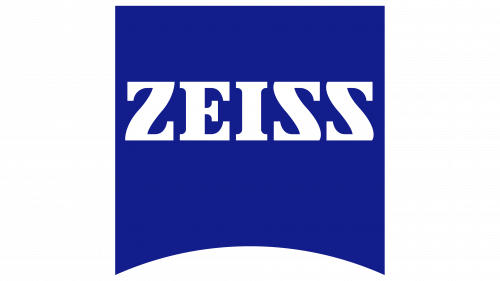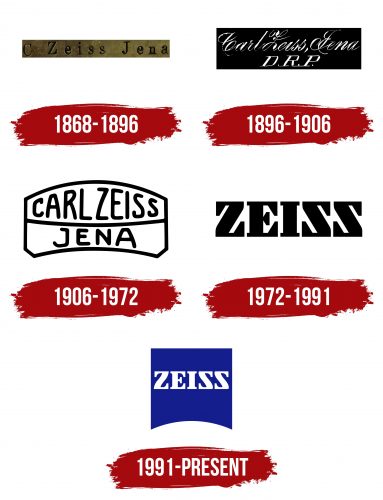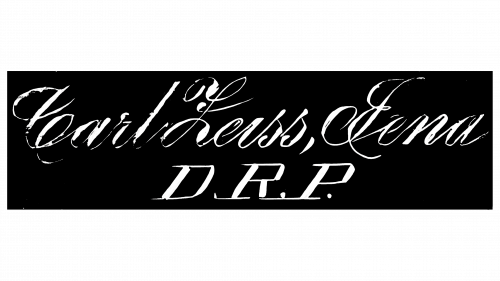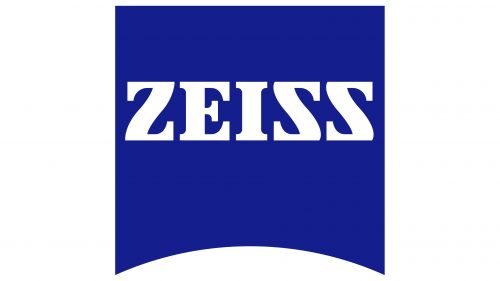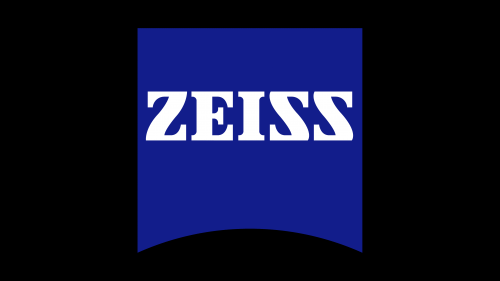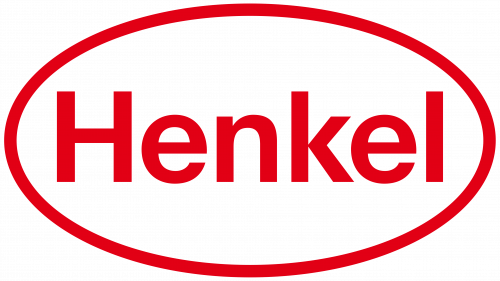The Zeiss logo is a powerful tool for effective marketing. It is simple and minimalist yet very meaningful due to the well-chosen font, which perfectly reflects the European leader in optics manufacturing concept.
Zeiss: Brand overview
On November 17, 1846, in Jena, Germany, thirty-year-old mechanic Carl Zeiss established a modest workshop to manufacture and maintain fine mechanical and optical devices. This marked the beginning of Zeiss’s history. The company first concentrated on producing basic microscopes, magnifying glasses, and other optical tools.
Initially, the workshop produced only a small number of microscopes annually. However, Zeiss’s name expanded fast because of the excellent quality of its goods and its creative manufacturing strategy.
A significant turning point in the business’s history was reached in 1866 when Carl Zeiss started working with Ernst Abbe, a young physicist. This collaboration was very successful and produced several important advances in the science of optics.
In 1872, Abbe created a theory of image creation in the microscope, which served as the basis for developing superior objectives. Because of this breakthrough, the company was able to solidify its position in the market and greatly enhance the quality of its microscopes.
The business expanded quickly during the 1880s. Glass expert Otto Schott joined Zeiss in 1881. Zeiss, Abbe, and Schott collaborated to create new varieties of optical glass, which made it possible to produce even more sophisticated optical instruments.
Following Carl Zeiss’s passing in 1889, Ernst Abbe founded the Carl Zeiss Foundation and eventually acquired the business. Thanks to this structure, the company could preserve its independence and grow steadily.
Its activities began to expand in the early 20th century. The business started making binoculars, astronomy equipment, camera lenses, and other optical gear.
World War I temporarily halted its overseas operations, but the company swiftly recovered its market share after the conflict was over.
It continued with its optical innovations in the 1920s and 1930s. The business created the first lens anti-reflective coatings, greatly enhancing the image quality of optical instruments.
The company suffered serious damage during World War II. Oberkochen in West Germany became the site of some of its production after the war, with Jena falling under Soviet rule.
Two companies—one in East Germany and one in West Germany—rose in the years following World War II. Both persisted in creating and refining optical instruments, engaging in rivalry within global marketplaces.
It contributed significantly to the development of the space program in the 1960s and 1970s by creating optics for satellites and telescopes.
Its production of semiconductor equipment began in the 1980s, indicating a shift in the company’s operations.
The 1990 reunification of Germany resulted in the merger of the two firms, which enabled the pooling of resources and knowledge.
In the 2000s, it continued growing its business, breaking into new markets, and creating cutting-edge technology in various industries, including industrial metrology and medical diagnostics.
In 2001, it unveiled a ground-breaking EUV (Extreme Ultraviolet) lithography technique for producing semiconductors. This invention made an important development in microelectronics possible, allowing for the manufacture of microchips with even higher component densities.
It made a significant move into medical technologies in 2005. Its position in the ophthalmic equipment market was strengthened when the business purchased Humphrey Systems’ ophthalmic systems division.
It commemorated its 160th anniversary 2006 by introducing a new range of industrial high-precision measurement tools. These instruments use cutting-edge optical technologies to guarantee unprecedented measurement accuracy in the aerospace and automobile industries.
The launch of the ORION Helium Ion Microscope in 2010 significantly advanced microscopy by obtaining previously unheard-of resolution levels for studying nanostructures.
In 2012, it increased its market share in consumer optics by introducing a new range of premium lenses for digital cameras. Because of their excellent optical performance, professional photographers soon adopted these lenses.
In 2015, it made noteworthy advancements in medical imaging. The business unveiled the KINEVO 900 intraoperative visualization device, which gave surgeons previously unheard-of visualization capabilities during operations, revolutionizing neurosurgery treatments.
In 2018, it introduced the ZEISS Smart Services platform, marking a significant advancement towards digitization. This technology significantly increased the effectiveness of its products by enabling clients to obtain remote support and equipment servicing.
In 2020, it concentrated on advancements in smartphone optics. The business entered the quickly expanding smartphone camera market by collaborating with top mobile device makers to create high-quality cameras.
Notable progress was made in quantum technologies in 2022. The company strengthened its position in this exciting area by launching a new range of optical parts for quantum computing.
In 2023, it increased its augmented reality (AR) footprint. The business created a new line of optical devices with a broader field of view and better image quality for AR glasses. This breakthrough created new opportunities for using augmented reality technologies in business and healthcare.
In 2024, it achieved breakthroughs in medical diagnostics. The business unveiled a novel optical coherence tomography (OCT) device integrating artificial intelligence to diagnose early eye illnesses. This technique greatly increased diagnostic accuracy and speed, representing a major advancement in ophthalmology.
Meaning and History
What is Zeiss?
It is a German company known for its expertise in optics and optoelectronics. The company manufactures a wide range of precision optical products, including camera lenses, microscopes, binoculars, eyeglasses, and medical devices such as ophthalmic and surgical microscopes. Its precision makes it a leading name in various industries, including healthcare, scientific research, photography, and consumer electronics. Professionals and enthusiasts worldwide use The company’s products, contributing to science, medicine, and technology advances.
1868 – 1896
This logo stands out for its simplicity, as it contains only one element—the company’s name at the time, C Zeiss Jena. It is set in a standard typographic font resembling Times New Roman, the type often used by default in printed documents today. This is a very practical serif typeface: it quickly catches the eye, ensures text clarity, maintains a formal style, and fits its era, as the brand appeared in the second half of the 19th century.
The inscription is laid out in a single line and is characterized by wide spacing between the words. The company chose this approach to convey closeness to its customers, indicating that their problems are understood and that the company can solve them professionally while adhering to all established standards. Essentially, it reflects customer focus and represents a savvy marketing move.
Neat serifs of two types complement the thin letters: sharp-tipped (on “C,” “Z”) and blunt, flat-ended (on “i,” “s,” “J,” “n”). The letter spacing is also wide, making the text clear and easily readable despite the thin strokes.
The first character is the solitary glyph “C,” a shortened version of the company’s founder’s name—”Carl.” This is followed by his last name, “Zeiss.” The line ends with the name of the city, Jena, from where the German optical production originated and operated for most of its history. The text’s content is straightforward, reflecting the seriousness and practical nature of the brand. Thus, the visual identity of that time fully corresponds to its era.
1896 – 1906
Almost everything in the visual identity changed during this period—from the font to the style. The complete transformation of the Zeiss emblem is linked to the company’s growing popularity and excellent product quality. Eyeglass lenses began to be marked with an inscription that resembled flowing handwriting with ornate letters, giving the emblem even more individuality.
The logo features numerous curls, loops, swirls, and wavy lines, making it look like a large monogram with a long inscription forming a beautiful pattern. But this is not the only difference. Many other nuances make it completely different from the previous version of the visual identity. The key differences include:
- The use of the full name and surname of the company’s founder (Carl Zeiss);
- The appearance of a second line (the abbreviation D.R.P. for Deutsche Reichs Patent);
- Highlight the commas of the cities where the production is located (Carl Zeiss, Jena).
In this way, the brand expanded the text, providing more information about itself to build customer loyalty and trust. The design works perfectly with smooth lines and soft curves because it is perceived positively. However, this description applies only to the top row: the inscription below is more serious. The font used there is geometric, business-like, and technical. The letters are equipped with straight serifs, enhancing the sense of strictness.
The contrast between the first and second lines doesn’t diminish the logo—on the contrary, it adds dynamism because the two parts of the text are radically different. One is executed elegantly and romantically, while the other is grounded and strictly business-like. Despite the difference, they share one common characteristic—italics. In both cases, the inscriptions are slanted to the right, confirming the company’s drive for active growth.
1906 – 1972
The German company chose a new logo to communicate its direct connection to lens production. The key element is a complex geometric shape whose outline resembles an eyeglass lens. This is visible due to the surface being concave on one side and convex on the other. The emblem appears as a rectangle slightly curved at the top and bottom.
The geometric shape is distinctly divided into two unequal halves, matching the number of lines.
- The upper section looks inflated and takes up more space. It contains the name and surname of the company’s founder, Carl Zeiss. The unique feature of this inscription is its uneven height, with shorter letters on the sides and taller ones in the middle. This creates a bulging effect, aligning with the lens manufacturer’s concept and profession. The words are placed close together, almost merging.
- The lower part of the logo is concave: even the dividing line bends slightly, forming a narrow background, which also makes the glyphs here uneven in height. However, in this case, it’s the opposite: the taller letters are on the sides (right and left), while shorter symbols are grouped in the center. This line displays the name of the company’s hometown.
In this way, the text in the Zeiss emblem is now divided: the founder’s and city’s names are listed separately. This positively affected branding, providing people with clear information and reflecting the company’s competence and customer focus. The downward-curved plate, divided by a horizontal line, became a good base, perfectly conveying the shape of real eyeglass lenses—slightly curved for better visibility.
The inscriptions are made with a rounded, smooth, even, and simple font. The capital letters lack serifs and vary in height. At the same time, they share common characteristics: straight strokes, narrow lines, and soft curves. This visual softness of the glyphs fosters a connection to the brand, evoking a sense of the product’s easy adaptation for personal comfort.
1972 – 1991
The thin outlines, lightness, and simplicity of Zeiss’s visual identity are now a thing of the past. The logo now appears heavy and powerful, emphasizing the company’s stability in the professional market, competitiveness, and ability to withstand any production demands. There is nothing in the logo but the name. It expresses the brand’s confidence in its capabilities.
The inscription occupies the entire space of the emblem. It is laid horizontally and consists of ultra-bold block letters—monolithic, massive, and huge. The glyphs are so large that the serifs are almost unnoticeable, as they are small and not very expressive. The serifs don’t have sharp ends; they are smooth, miniature projections, adding a classical touch to the text.
The name has one interesting feature that hasn’t been seen until now. In this version of the visual identity, the designers emphasized the similarity between the “Z” and “S.” They highlighted these traits and turned them into a unique emblem feature. The letters look like mirror images of each other. This graphic technique made the logo more attractive and added harmony, as paired or similar elements tend to draw more attention.
The color scheme is very simple: the company stayed within the monochrome range it has been accustomed to since the brand’s inception. Black glyphs on a white background are the best modern graphics could offer. This combination supports excellent readability and demonstrates the manufacturer’s professionalism, focus on details, and full commitment to work, creating a positive image among consumers.
1991 – today
Its minimalism and depth of meaning characterize the Zeiss logo. It is known for being attractive, eye-catching, and easy to remember, as its fans are precision enthusiasts, a group the brand needs to satisfy. As a result, the visual identity that appeals to them must be bright and distinct. That is why the emblem is recognizable worldwide. It is concise yet bold, modern yet traditional. It retains the old font—Clarendon Black—with modernized elements.
The wordmark features uppercase letters with smooth lines, gentle curves, and short serifs. Particular attention is drawn to two glyphs that appear to be mirror images of each other. This refers to the “Z” and “S,” whose similarity the designers skillfully emphasized, making it a hallmark of the Zeiss logo.
At the same time, an intriguing new addition appeared: a blue square concave at the bottom. It serves as the name’s base and successfully represents the company’s concept, as the arch resembles a lens, hinting at the manufacturer’s focus on optical systems. The bold font looks impressive against this background, symbolizing clarity and a commitment to absolute precision. The symmetrical letters, straight lines, and perfectly sharp corners suggest this dedication.
What also makes the emblem unique is its color palette, featuring an ultramarine shade. It’s well known that this hue represents stability, freshness, reliability, and progress, while white symbolizes honesty, loyalty, and unity. Together, they create an amazing sense of responsiveness—pleasing to the eye and appealing to customers.
